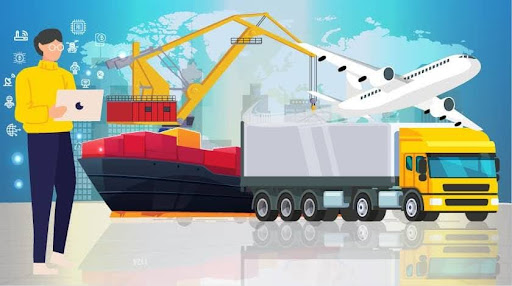Introduction
In today’s fast-paced, interconnected global economy, efficient logistics operations are more vital than ever before. Businesses face growing pressure to meet customer demands for faster deliveries, streamlined inventory management, and real-time visibility into supply chain processes. This need has driven an increasing reliance on logistics technology, particularly third-party logistics (3PL) software. By leveraging powerful tools like warehouse software and transport management systems, companies can optimize their operations, reduce costs, and maintain a competitive edge. In this article, we’ll explore why logistics technology has become indispensable for businesses and how 3PL solutions are revolutionizing the way supply chains operate.
The Foundation of Logistics Tech: Warehouse Software
At the core of logistics operations lies the warehouse—an essential hub where inventory is stored, sorted, and prepared for distribution. To manage these complex processes efficiently, businesses turn to advanced warehouse software that automates and optimizes everything from receiving shipments to dispatching orders.
Modern warehouse management systems (WMS) allow businesses to track inventory levels in real-time, improve picking accuracy, and reduce human error. Features like barcode scanning, shelf labeling, and automated restocking alerts enable better space utilization and faster turnaround times. As e-commerce continues to boom, the need for intelligent warehouse software grows exponentially, making it a critical component of any logistics strategy—especially for third-party logistics providers who serve multiple clients under one roof.
Why 3PL Services Are on the Rise
Third-party logistics (3PL) providers have become a go-to solution for companies that want to outsource logistics operations. The advantages are clear: scalability, cost savings, and access to a wide range of specialized services. Businesses no longer need to invest heavily in warehousing, transportation, and labor. Instead, they partner with 3PL companies that already have the infrastructure and expertise in place.
What’s driving this trend is the increasing complexity of global supply chains. From fluctuating fuel prices to international trade regulations, logistics is no longer a straightforward task. 3PLs provide the agility businesses need to navigate these challenges. They also leverage advanced software platforms to offer their clients greater transparency, detailed analytics, and customized logistics solutions tailored to industry-specific needs.
Key Features of Effective 3PL Software
To provide top-tier service, 3PL companies rely on cutting-edge software that integrates various aspects of logistics management. A comprehensive 3PL system usually combines warehouse management, order processing, customer relationship management, and transportation planning into a single platform.
Some of the key features include:
- Real-Time Inventory Tracking: Clients can monitor inventory levels and movement from anywhere at any time.
- Order Fulfillment Automation: From order receipt to shipping, processes are streamlined to reduce delays.
- Multi-Client Management: A single system can handle operations for multiple clients, each with unique requirements.
- Custom Reporting: Detailed analytics offer insights into order accuracy, fulfillment times, and cost efficiency.
- Integration Capabilities: 3PL software often integrates with e-commerce platforms, accounting tools, and shipping carriers to create a seamless workflow.
By offering these capabilities, 3PL software not only supports operational efficiency but also strengthens client relationships through greater reliability and transparency.
Enhancing Freight and Delivery with Transport Management Systems
While warehouse operations are crucial, effective transportation is equally essential in delivering goods on time and within budget. This is where a transport management system (TMS) comes into play. A TMS is designed to plan, execute, and optimize the physical movement of goods, ensuring efficient coordination between shippers, carriers, and customers.
TMS platforms allow logistics providers to compare carrier rates, track shipments in real-time, and manage route planning. Advanced features like predictive analytics and dynamic routing help mitigate risks such as delays due to weather or traffic. Integration with GPS and telematics systems further enhances delivery performance by offering insights into driver behavior and vehicle maintenance needs.
For 3PL companies, incorporating a robust transport management system into their logistics suite ensures that every link in the supply chain is optimized. It adds significant value for clients who expect real-time delivery updates, flexible shipping options, and lower transportation costs.
The Role of Data and Analytics in 3PL Technology
Data is the backbone of modern logistics. Every scan, shipment, delivery, and customer interaction generates valuable information that can be used to refine processes and improve performance. 3PL software equipped with analytics tools allows businesses to track key performance indicators (KPIs) such as order accuracy, delivery speed, cost per shipment, and inventory turnover.
These insights empower logistics managers to identify bottlenecks, forecast demand more accurately, and make data-driven decisions. For instance, if analytics show that certain SKUs are consistently returned, businesses can investigate product quality or update their fulfillment strategies. Similarly, route optimization tools can analyze traffic data to determine the most efficient delivery paths, saving time and fuel.
The more data a 3PL provider collects and analyzes, the more value they can deliver to clients in terms of cost efficiency, service reliability, and customer satisfaction.
Challenges and Future Trends in Logistics Technology
Despite its many advantages, adopting logistics technology isn’t without challenges. High initial costs, integration complexity, and staff training can be significant barriers—especially for smaller 3PL providers or new entrants. However, as cloud-based platforms and Software-as-a-Service (SaaS) models become more common, these obstacles are gradually diminishing.
Looking ahead, the future of logistics tech lies in automation and artificial intelligence. Autonomous vehicles, drone deliveries, and robotic picking systems are no longer just concepts—they’re being tested and implemented in real-world scenarios. Machine learning algorithms will further enhance forecasting, route planning, and inventory optimization. Blockchain is also gaining traction for improving supply chain transparency and reducing fraud.
For 3PL providers, staying ahead means continually investing in new technology and refining their offerings. Clients expect faster, more reliable service with end-to-end visibility, and only those logistics companies that embrace innovation will thrive.
Conclusion
In a business landscape driven by speed, accuracy, and customer satisfaction, logistics technology is no longer optional—it’s essential. From warehouse software that streamlines storage and fulfillment, to transport management systems that optimize delivery networks, every component plays a vital role in enhancing operational efficiency. Third-party logistics providers, empowered by these tools, offer businesses the flexibility and expertise needed to navigate today’s complex supply chains.
As the demand for faster, smarter, and more transparent logistics grows, investing in 3PL software will be a game-changer for businesses of all sizes. Those who leverage the full potential of logistics technology will not only reduce costs and improve service but also gain a decisive edge in an increasingly competitive market.


